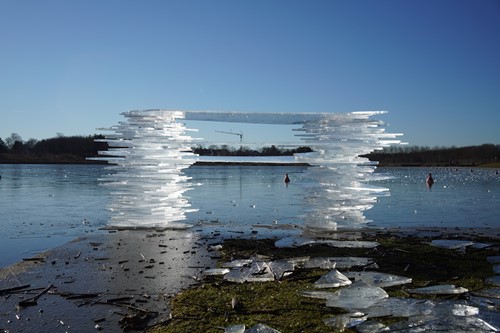
Land art is a term originating in the art world of the 1960s. Also called earth art or earthworks, land art was born from a combination of reaction to the increasingly commercialized and commodified nature of art and environmental activism. Land art has remained popular throughout the decades and you can find many famous examples all over the world. To understand more about land art, here are the basic elements you need to know.
While most forms of art are meant to last forever, land art is unique in its ephemeral nature. Land art installations only last a short amount of time because of natural processes. Some examples include intricate drawings in sand on a low-tide beach or sculptures built out of snow. When the tide comes in and the air warms up, these art pieces will fade away. However, there are some permanent examples of land art that have already lasted decades, such as Robert Smithson’s “Spiral Jetty” in the Utah salt flats. The key factor is that land art must exist outside of established art spaces like museums. If it’s inside a building, it’s no longer land art.
Another key tenet of the land art movement is use of natural materials. Stone, water, fallen tree branches, leaves and ice are common examples. Land art might also include natural elements from the animal world like feathers, shells, animal bones or furs. Some artists and critics insist on this rule and claim that land art using other materials like textiles or metal means the art is no longer “land art.” However, there is overlap between land art and environmental art, which seeks to draw attention to or comment on natural phenomena. These pieces frequently include materials like concrete and metal and string or glue to hold components together.
While there can be some debate over the actual materials used in land art, one aspect artists agree on is the importance of location. Land art is always created for and in a specific place in nature and must stay there throughout its “life.” Sometimes, specific characteristics of a site may play a huge role in the art itself. For example, land art may depend on rising or lowering water levels, the angle of the sun, direction of wind or even the local flora and fauna. This is the most dramatic contrast with traditional art displayed in galleries or museums and can make the art less accessible when set up in remote locations. However, the opposite is also true: many regard land art as a more accessible art form because it does not require visits (or payments) to museums or galleries.
Like any art movement, land art has many facets and interpretations. These key elements are the most important things to remember when seeking or creating land art of your own.

Meet Kimberly Jokela:
With a genuine passion in people Kimberly loves helping her clients make their real estate dreams or needs come to life! Specializing in Luxury, Vacation, Retirement or Investment properties.
Born and raised in the midwest in a family with a strong work ethic, filled with creativity & dedication.
Her determination lead her to attend college at the "Philadelphia Performing Arts" where she had the opportunity to follow her passion in the Arts & to travel. Living in California with her husband Rick for 15 years together they built a successful business. After the birth of her beautiful daughter Brittany, seeking a "small town” coastal lifestyle, they took a trip to Naples Florida & fell in love with all it has to offer and made the jump!
With now over 17 years experience as a licensed Realtor serving Naples, Bonita Springs, Marco Island, Estero & Fort Myers.
A great listener, negotiator & connector, Kimberly is dedicated to helping her clients looking to BUY their ideal Florida property!
Her warm & friendly personality is present in everything she does on her clients behalf!
Kimberly’s creativity & "out of the box" thinking gives her clients the extra leverage they need when SELLING a property.
Her well organized marketing includes professionally produced photography, video, drone imagery, media presentation in print, numerous online websites & social media!